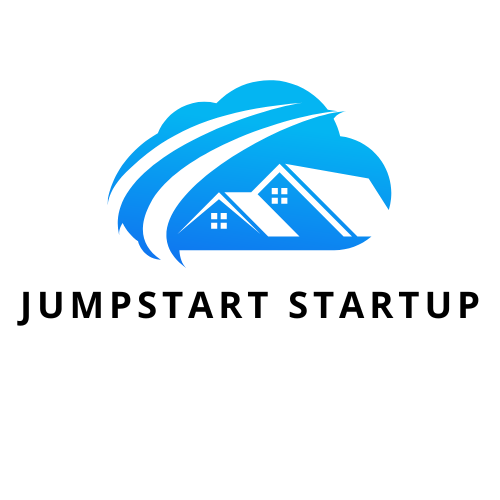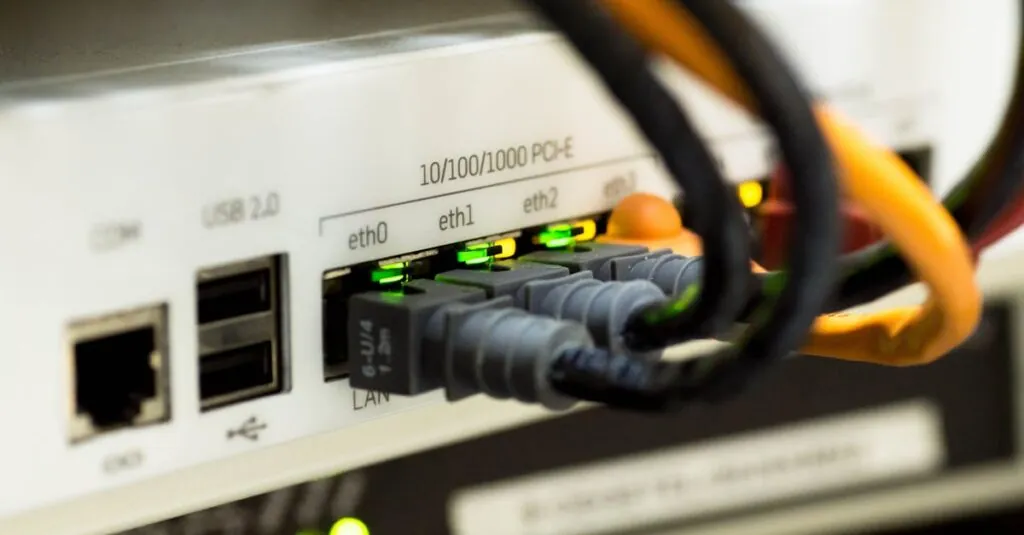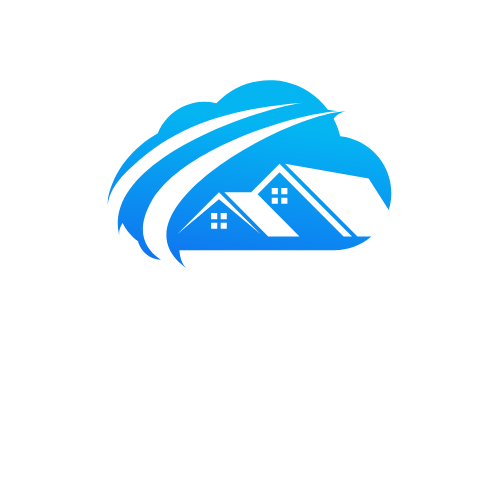Imagine waking up to a world where your coffee brews itself, your thermostat knows your perfect temperature, and your fridge reminds you to buy more milk. Welcome to the Internet of Things (IoT), where everyday objects become smart, connected, and a little too chatty. It’s like living in a sci-fi movie, but without the flying cars—yet.
IoT isn’t just a techie buzzword; it’s revolutionizing how people interact with their environment. From smart homes to wearables, this network of interconnected devices is making life easier and more efficient. But with great connectivity comes great responsibility—or at least a lot of passwords. Buckle up as we explore the fascinating world of IoT, where your toaster might just become your new best friend.
Table of Contents
ToggleOverview of Internet of Things (IoT)
Internet of Things (IoT) encompasses a vast network of devices equipped with sensors and software. These devices connect and exchange data over the internet, creating a streamlined flow of information across platforms. With applications ranging from smart homes to industrial automation, IoT enhances efficiency and convenience in daily tasks.
Smart devices automatically collect and share data. For instance, a thermostat adjusts room temperature based on user patterns, optimizing energy use. Home security systems utilize IoT technology to enable remote monitoring, providing real-time alerts and enhancing safety.
Healthcare also benefits significantly from IoT. Wearable devices track health metrics, allowing for continuous patient monitoring. In agriculture, sensors monitor soil conditions, streamlining irrigation and improving crop yields.
Interconnected systems contribute to improved decision-making. Real-time data analysis leads to quicker responses for businesses, ensuring efficient operations. Challenges like security vulnerabilities arise from increased connectivity, prompting the need for robust cybersecurity measures.
Industries invest in IoT solutions to drive innovation. Enhanced operational efficiency results in reduced costs and increased productivity. The integration of artificial intelligence further amplifies the potential of IoT, enabling predictive maintenance and smarter automation.
Overall, IoT represents a pivotal shift in how devices interact with users. Its growing influence reshapes industries and enhances standards of living. With continuous advancements, IoT promises to further transform daily interactions and operational paradigms.
Key Components of IoT
IoT relies on several key components that enable devices to connect, communicate, and function effectively.
Sensors and Devices
Sensors play a crucial role in collecting real-time data from the environment. Various types of sensors, such as temperature, humidity, or motion detectors, monitor specific conditions. Devices equipped with these sensors could include smart thermostats, fitness trackers, and security cameras. These smart objects not only gather data but also automate tasks such as adjusting temperature or notifying users of unusual movements. Such capabilities enhance efficiency and user convenience across numerous applications.
Connectivity
Connectivity ensures that devices communicate seamlessly. IoT devices typically utilize technologies like Wi-Fi, Bluetooth, and cellular networks to connect to the internet. Various protocols like MQTT and HTTP facilitate data transmission, allowing devices to exchange information in real-time. Strong connectivity creates a robust network, enabling interactions among multiple devices, which enhances overall system performance. Reliable connections contribute significantly to the effectiveness of applications in smart homes, healthcare, and industrial automation.
Data Processing
Data processing converts raw information into actionable insights. Devices collect data continuously, which then needs to be analyzed to optimize functionality. Cloud processing serves as a central hub where data is aggregated, processed, and stored. Advanced analytics tools apply machine learning algorithms to identify trends and patterns within the data, enabling smarter decision-making. Effective data processing leads to improvements in response times and system efficiency, driving innovation across various industries.
Applications of IoT
The applications of the Internet of Things (IoT) span various sectors, significantly enhancing efficiency and convenience in everyday life.
Smart Homes
Smart homes integrate IoT technology to provide convenience and energy efficiency. Devices such as smart thermostats adjust heating and cooling based on user preferences. Sensors detect motion to enhance security systems, allowing remote monitoring of premises. Additionally, smart lighting automates illumination based on occupancy patterns, reducing energy waste. These interconnected systems improve daily routines, making household management seamless.
Industrial IoT
Industrial IoT revolutionizes manufacturing and logistics. Companies deploy sensors on machinery to monitor performance and predict maintenance needs. Real-time data collection enhances supply chain management, ensuring timely deliveries. Automation of processes, driven by IoT, increases production efficiency and reduces operational costs. Data analysis from these systems provides insights that optimize workflows, leading to a more responsive industrial environment.
Healthcare Solutions
Healthcare solutions leverage IoT to improve patient care and operational efficiency. Wearable devices track vital signs and health metrics, enabling continuous monitoring. Remote patient monitoring reduces the need for frequent hospital visits and allows for timely intervention in emergencies. IoT-enabled devices facilitate data sharing among healthcare providers, enhancing coordination in treatment plans. These innovations increase health outcomes, demonstrating IoT’s significant impact on the healthcare sector.
Benefits of IoT
The Internet of Things (IoT) presents numerous advantages across various sectors. Its ability to streamline processes and enhance user experiences stands out.
Increased Efficiency
Efficiency sees significant improvement through IoT applications. Automated systems allow devices to operate without human intervention, reducing the time required for routine tasks. Smart thermostats adjust temperature settings independently based on real-time user habits, leading to energy savings. Equipment in industrial settings utilizes sensors to monitor performance, triggering maintenance alerts when necessary. Quick response times in logistics optimize delivery routes, showcasing enhanced supply chain management. Overall, businesses experience increased productivity by adopting IoT technologies.
Enhanced Data Collection
Data collection becomes more sophisticated with IoT integration. Devices equipped with sensors gather vast amounts of information, allowing for better analysis and decision-making processes. Wearable health devices continuously monitor metrics like heart rate and activity levels, sharing insights with healthcare providers for personalized care. Farming sensors provide detailed insights about soil conditions, helping farmers make informed decisions about irrigation and fertilization. Real-time data encourages proactive measures and enhances operational effectiveness across various industries.
Challenges and Concerns
Despite its numerous advantages, the Internet of Things (IoT) faces several challenges that require attention.
Security Issues
Security poses a significant concern for IoT implementations. Vulnerabilities in devices can lead to unauthorized access and data breaches. Hackers exploit these weak points, compromising user privacy and sensitive information. A reported 70% of IoT devices are susceptible to attacks due to inadequate security measures. Organizations must prioritize cybersecurity solutions to safeguard their networks and devices.
Interoperability
Interoperability presents another challenge in the IoT landscape. Devices from various manufacturers often use different communication protocols, hindering seamless integration. Incompatibility slows down data exchange and functionality across platforms. Approximately 60% of IoT projects fail to achieve desired interoperability, affecting operational efficiency. Standardized protocols and frameworks are essential to create a cohesive ecosystem, allowing devices to work together effectively.
Future of IoT
The future of the Internet of Things (IoT) presents exciting opportunities and challenges. Emerging trends indicate a rapid evolution in technology and application.
Emerging Trends
Artificial intelligence integration significantly enhances IoT systems, enabling smarter decision-making. Connected devices increasingly use edge computing for faster data processing, reducing latency. Increased focus on sustainability drives the development of energy-efficient IoT solutions. Security improvements, such as advanced encryption and authentication, are prioritized to protect sensitive data. Additionally, 5G technology is expected to facilitate faster connections and support a larger number of devices, unlocking new possibilities for smart cities and automated systems.
Predictions
Experts foresee a dramatic increase in the number of IoT devices, expected to exceed 30 billion by 2030. Healthcare will likely experience major advancements through IoT, as remote patient monitoring grows in popularity. Industries are set to adopt IoT solutions extensively for cost reduction and operational efficiency. By 2025, the global IoT market value could reach over $1 trillion, underscoring its significance in various sectors. Organizations may prioritize collaboration among various IoT ecosystems, improving interoperability and integration across devices, ultimately creating a cohesive network.
The Internet of Things is reshaping how people interact with the world around them. As smart devices become integral to daily life they enhance efficiency and convenience across various sectors. With advancements in artificial intelligence and edge computing the potential for IoT continues to grow.
While challenges like security and interoperability remain significant they can be addressed through innovation and collaboration. The future of IoT looks promising with experts projecting a surge in connected devices and market value. Embracing these technologies will not only improve operational efficiency but also elevate user experiences across industries. The journey of IoT is just beginning and its impact will be felt for years to come.






